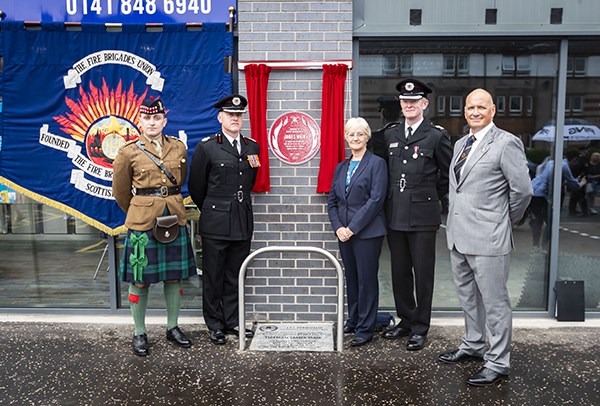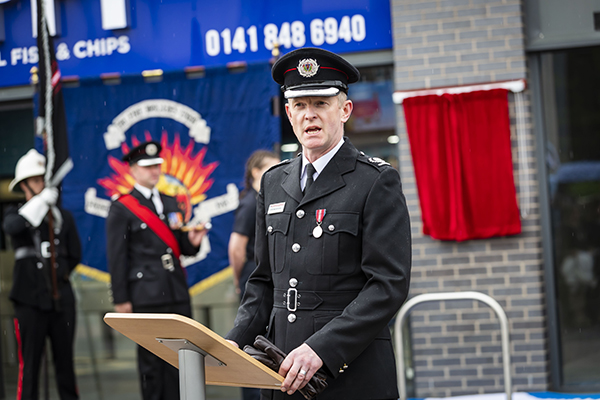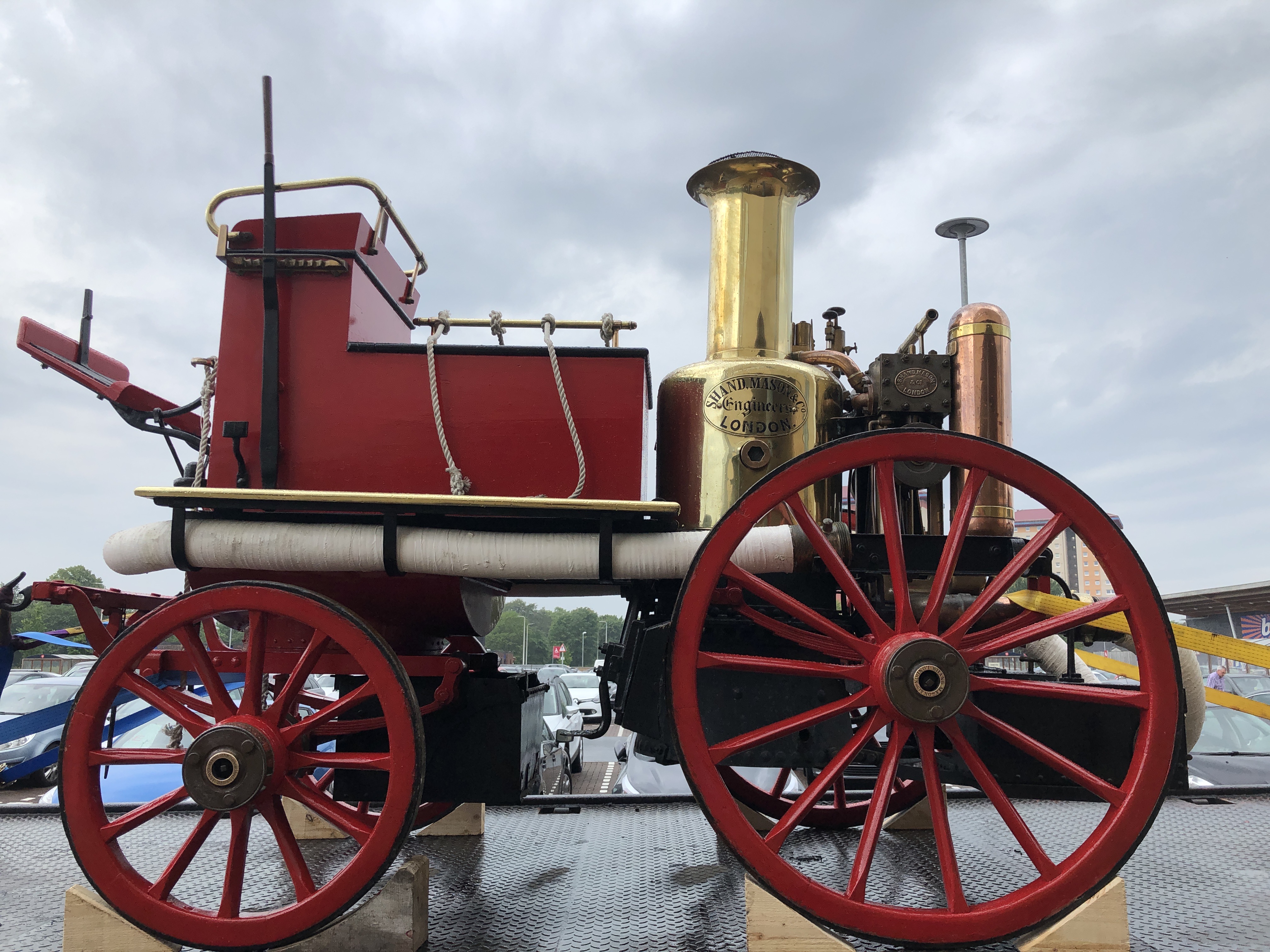James Mair
James Mair lost his life in the line of duty on the 29th of June 1899. His Red Plaque was presented on the 120th anniversary of his death, the 29th of June 2019.
When he became a firefighter, James had served as a soldier at Tel el Kebir for six years before retraining as a slater. He had joined the Paisley Fire Brigade in January 1889, aged thirty-five, to earn enough money to support his wife and five young children, the eldest 10 years old. He was considered to have a genial disposition, and was much respected by his comrades, fellow tradesmen and all with whom he came in contact.
Poignantly, less than six months after becoming a firefighter, James was crushed by a collapsing building during a fire at the Ferguslie Fireclay Works in Paisley, the property of Messrs. Robert Brown & Son. The building in which the fire took place is situated in the grounds some distance from the roadway, and measured 90 feet by 30 feet. It was two storeys in height, the upper flat was used a potter shop and the ground floor as a seggar store, in which ware was fired. In the upper flat there was a large stock of pottery. It was difficult to estimate the cost of the material, but it was understood that the damage was not less than £1500. This, together with £500 estimated damage to the building, made the total not less than £2000. Under Superintendent Arthur M’Naughtan, the Fire Brigade arrived to the scene early and succeeded in in confining the fire but the north wall of the building fell outwards, burying James in the rubble. He sustained fatal head injuries in the accident and succumbed to his injuries shortly before midnight.
Large crowds attended James’s funeral, lining the route of the cortege with a Public service held in St Goerge’s Parish Church Hall. His helmet was used as a collection pot for funds to support his widow and children at a time when no formal funds existed. The widow would have been given her husband’s helmet and axe as a mark of respect and a keepsake. The Town Council then opened a public subscription to care for them in the longer-term. Today, James’ Red Plaque can be found amidst shops built on the site of the fire. The ceremony to unveil this memorial was attended by generations of his family who visited from the USA.
The burgh Biremaster Arthur M’Naughtan reported that:
“Paisley, was then a town with narrow streets, derelict buildings, and insanitary conditions of the worst description. There was a sort of voluntary fire brigade, of which Mr Gillespie, slater, was chief. But it was sometimes difficult to get them together when a fire broke out as they were at work.”
Equipment in 1817 was a steam engine, a manual engine — and a shoemaker, Campbell Noble, was commandeered with his hosereel. As improvement schemes were introduced to the town more attention was given to the fire department.
“To warn the men of the brigade wherever they might be at work Mr M’Naughtan conceived the idea of having the High Church bell tolled. But one recalls how when of a dark winter evening there was suddenly heard the ominous triple beat of the tongue continued for five or 10 minutes the whole community was astir with interest and even excitement. The brigade headquarters at the time were in the old backyard in Moss Street. Fire engines were kept in a shed.”
When the alarm was raised horses were unharnessed from cabs in County Square and attached to the engine and hosereel. With the growth of the town a site was selected in Johnston Street for a new fire station, occupied in 1899. In 1912 a new motor engine capable of throwing 450 gallons of water a minute and carrying 2000 feet of hose was bought for over £1000. Two motor hose carriages, carrying 3000 and 800 feet of hose respectively were also acquired and, adds the report: “Of course, there is still the essential 50 feet telescopic fire escape.” Many inventions by Mr M’Naughton, were adopted by other fire brigades. A testimony’ to his thoroughness and precautions was that, in his long service only one fireman lost his life — James Mair.
Below are memories added by those who knew James Mair or had a story that they wish to share with you. If you have a tribute for James Mair that you wish to add, please include your memory below.
Please help support our Firefighters with the Firefighters 100 Lottery, a weekly online lottery created to support firefighters, their bereaved families and to honour the bravery and sacrifice of firefighters killed in the line of duty. With your help we can have schemes such as the Red Plaque Project for memorials to those lives lost.
Learn about the history of the Red Plaque Project and discover other Firefighters that have also received Red Plaques.
Photo credits: Roddy Scott



















